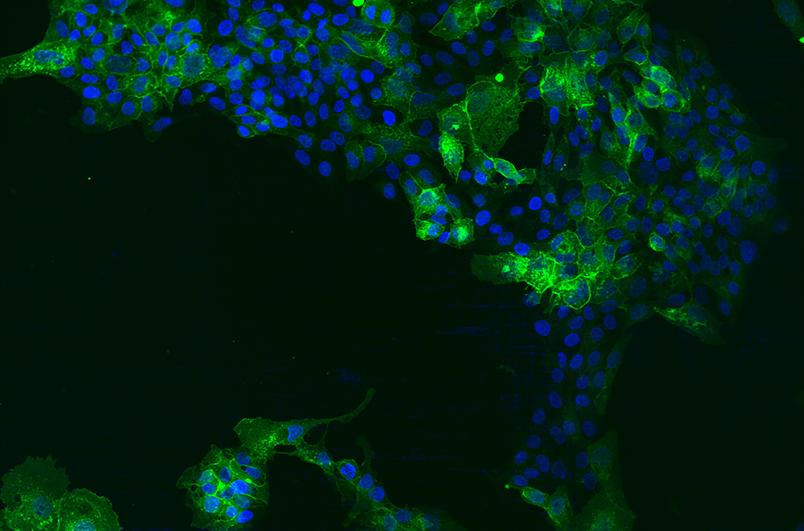
Virology
How hepatitis E viruses enter cells
A certain surface protein is crucial to allow the hepatitis E virus to enter cells. Medication can suppress it.
Although hepatitis E is a common disease, little is known about the life cycle of the virus. Initial findings on how it manages to infect cells are reported by a team from Molecular and Medical Virology at Ruhr University Bochum, Germany, and Carl von Ossietzky University Oldenburg in the journal Hepatology from 7. February 2023. A protein called EGFR, short for Epidermal Growth Factor Receptor, plays a decisive role in the penetration of virus particles into cells. This finding could open up new treatment options against hepatitis E, since there are already approved drugs against EGFR that inhibit the activity of this receptor.
Cell culture model makes investigations possible
One of the reasons why hepatitis E is comparatively under-investigated is that a robust cell culture model for its study was only developed about three years ago in Bochum and Hanover. Researchers were now able to use this model to investigate how the virus is able to infect cells.

“We used drugs to suppress the activity of the EGFR protein in some cell lines at the time of virus entry”, explains first author Jil Alexandra Schrader. “In these cultures, we observed that there were significantly fewer infected cells.” To cross-check this, the researchers used cell cultures in which the co-receptor was over-produced. In this case, more infections occurred than in untreated cells.
A protein plays a major role as a co-receptor
“This shows us that the protein EGFR is of great importance for the entry mechanism of the virus into the cells,” says Jil Schrader. Moreover, the part of the protein that is on the outside of the cells and to which ligands bind is important for the entry of the viruses. If it is missing, the viruses cannot penetrate the cell. Further investigations are needed to determine whether other players are required for the virus to infect cells or whether the receptor itself introduces the virus. “For hepatitis C virus, for example, it is known that even more receptors are involved in the entry of the viruses into the cells,” explains Professor Eike Steinmann, head of the Department of Molecular and Medical Virology at Ruhr University Bochum. “This could also be the case with hepatitis E virus.”
The evidence that the EGF receptor is involved in infection is particularly interesting because there are already approved drugs that suppress its activity. “These drugs are approved in Europe and the USA for certain cancers where the receptor is overactive and can cause uncontrolled cell growth,” explains Dr. Volker Kinast, virologist at the Carl von Ossietzky University Oldenburg. Further studies would have to show whether these agents could be a treatment option against hepatitis E.